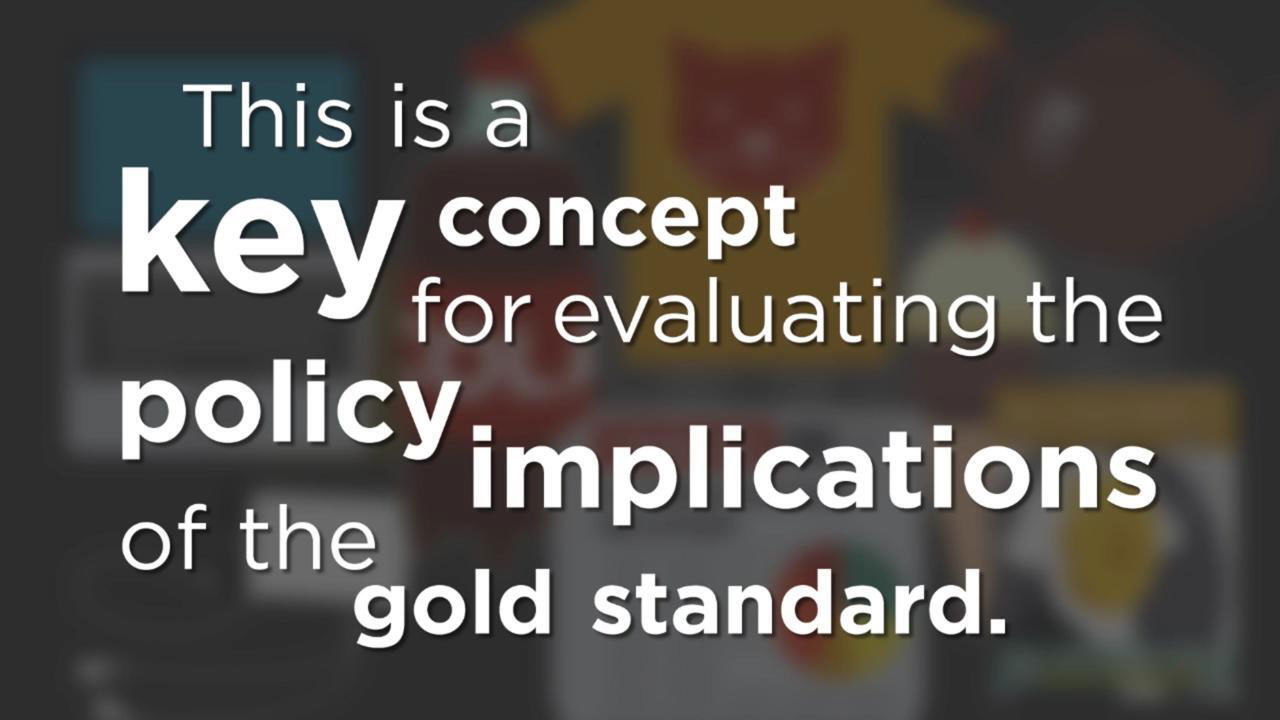The Gold Standard and Purchasing Power

A desirable property of money is that it holds its purchasing power—how many real goods and services you can acquire in the market with one unit of money. What do backers of the gold standard view as its primary benefits, in relation to the price level? In this video, St. Louis Fed economist David Andolfatto explains the gold standard and discusses its pros and cons.
Video Transcript
[Music playing]
Narrator: Money, whether gold coins or paper bills, is only valuable because of the goods and services we can buy with it. This is a key concept for evaluating the policy implications of the gold standard.
David Andolfatto: A desirable property of any monetary instrument is that it holds its value over short periods of time. So, holds its value ... its purchasing power.
What determines the purchasing power of gold or any other money for that matter?
Well, economists like to think of the purchasing power of the various objects as being determined by the supply and the demand for those objects. So, the purchasing power of money is how many goods one unit of money can buy.
For example, suppose a soda cost $2.
[Cash register dings]
We say that the price of the soda is $2. But alternatively, what is the purchasing power of $1? It’s half a soda. The purchasing power of money represents how many real goods and services you can acquire in the market with one unit of money.
Narrator: In terms of politics, the idea of returning to the gold standard is very controversial. However, among the broad spectrum of economists, nearly all agree that a return to the gold standard would not be a wise policy. So given that fact, what do backers of the gold standard view as its primary benefits?
Andolfatto: Proponents of the gold standard like to emphasize, at times, is the idea that by linking the money supply to gold, that this somehow provides the economy with what they call a nominal anchor to the price level. That is to say the price level—or the purchasing power of money—remains stable over long periods of time.
And the reason they say this is they have in mind that the demand for gold is basically growing at some natural rate—say, the rate of growth of the economy—and the supply of gold is just naturally limited because people have to go out and mine gold, as opposed to just printing up paper. So this natural limitation on the supply of gold is what keeps the purchasing power of gold stable over long periods of time, according to these advocates.
If the purchasing power of money rises, the cost of good goes down relative to this money. If the supply of that object is fixed, as it would be under a gold standard, and if the demand for that object fluctuates—as the demand for money appears to do—this implies that the purchasing power of your money will fluctuate from day-to-day.
Just recently, for example, after a run-up in its value, the purchasing power of gold dropped by 10% in a single day. How would you feel having gone to work for wages in gold one day and the next day watching the purchasing power of your gold wages drop like 10%?
Alternatively, imagine that you go out to go shopping. You wish buy some clothes, and you spend your hard-earned gold on the clothes just to watch your spent gold the next day rise in value by 10%. This would be very frustrating.
Gold Standard Video Series
- Part 1: How the Gold Standard Compares to a Fiat Money System (2:04)
- Part 2: Gold Standard and Inflation (3:00)
- Part 3: Purchasing Power (3:17)
- Part 4: Benefits of a Fiat Money System (2:23)
- Part 5: The Gold Standard and the Central Bank (1:46)

